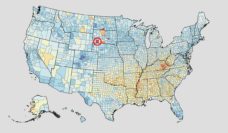Lantus, a widely prescribed insulin, is priced at $186 on average in the United States, according to analysis by Bloomberg. The same drug in India costs $41.65. The CDC reports that Americans are having such a hard time paying for pharmaceuticals that “almost 8% (21 million) of U.S. adults…did not take their medication as prescribed, 15.1% (39.6 million) asked a doctor for a lower-cost medication, 1.6% (4.2 million) bought prescription drugs from another country, and 4.2% (11 million) used alternative therapies.” The CDC report shows that the burden of the high cost of drugs is disproportionately falling on the poorest adults.
This is consistent with another study showing that the proportion of Americans who did not fill a prescription in the previous 12 months because they could not afford to peaked at 8.3% during the height of the Great Recession. In addition to this, Sharma, et al., showed that there is a significant amount of price variability in the Boston area. The authors write that because of this non-uniformity, consumers were paying much higher than the World Health Organization target prices for each respective drug measured.
Cost-related non-adherence, foregoing needed medications because of cost, has important health implications for consumers. Viswanathan, et. al report non-adherence leads to “125,000 deaths [per year], at least 10% of hospitalizations, and a substantial increase in morbidity and mortality… and a cost between $100 billion and $289 billion annually.” Insurers also pick up the tab on high prices that translate into higher costs and larger premiums for patients. Masshealth, Massachusetts’s Medicaid program, pays approximately $633 million per year for medications. Further, a June 2016 report by the Blue Cross Blue Shield of Massachusetts Foundation noted that Masshealth Pharmacy spending increased 18% from SFY2014 to SFY2015.
There is bipartisan agreement that high, unregulated pharmaceutical costs are a problem. The good news is that there are approaches that can be employed to confront the issue. Here are three things a state can do to reduce costs and assist patients: 1) increase price transparency, 2) cap prices, or 3) increase coverage. I argue that a version of the first option is best because it is the solution that both lowers system costs as well as prices for consumers.
Here are three things a state can do to reduce costs and assist patients: 1) increase price transparency, 2) cap prices, or 3) increase coverage.
Price Transparency
Accurate and reliable knowledge of pharmaceutical supply chains costs would provide information that would be invaluable for crafting effective pharmaceutical policy designed to improve medication coverage, lower cost-related non-adherence, and bring down health system costs. Those costs include, but are not limited to, research and development, manufacturing, procurement and retail costs.
The Massachusetts’ Board of Registration for Pharmacy could use regulatory power to require that all registered pharmacies report prices to a state agency such as the Center for Health Information and Analysis (CHIA). Alternatively, the legislature could mandate price reporting via statute. Some stakeholders are likely to oppose either approach, though the legislature has already shown a willingness to mandate transparency in other issues. The purpose of CHIA obtaining such prices would be to apply their capacity for data analysis and dissemination to inform both consumers and policymakers.
One approach taken by New Hampshire is to use claims data to estimate costs, implicitly making prices more transparent. However, claims data used in this way has limitations, including privacy concerns and the reality that relying on past data means the information is perpetually outdated. The third issue is that claims data does not always relay point of purchase out of pocket costs for the consumer.
Pharmaceutical Price Caps
Price cap legislation is another approach to lowering pharmaceutical costs. Limits on drug prices would be set by the state legislature resulting in consistent, affordable, and predictable prices for consumers and payers. The pharmaceutical lobby have responded in the past with the argument that high research and development costs necessitate high drug prices. But a recent Health Affairs article by Nancy Yu, Zachary Helms, and Peter Bach disputes this claim. The authors write: “We found that the premiums pharmaceutical companies earn from charging substantially higher prices for their medications in the United States compared to other Western countries generates substantially more than the companies spend globally on their research and development.”
One caveat to state-by-state pricing capping is that no state would be effective at this approach on their own. A Republican-controlled Federal government would be unlikely to let sweeping price regulations take hold. This means that legislative efforts by Massachusetts could, for the time being, be in vain and so political capital should not be spent on this right now.
Increasing Coverage of Medications
To help consumers, states could push insurers to increase payments for medications or expand the list of drugs covered by Medicaid. However, this approach is politically infeasible because it would likely increase rather than decrease costs at the state level.
Increasing price transparency via statutory reporting requirement is likely the most viable political approach to reduce the burden of medication prices for patients.
Crisis
Medication prices continue to rise and become unaffordable to both consumers and payers. More complete data is needed to craft better policy. Increasing price transparency via statutory reporting requirement is likely the most viable political approach to reduce the burden of medication prices for patients. Data gathering, analysis and dissemination of pharmaceutical costs and prices via CHIA would adequately inform policymakers and promote a perception of transparency among consumers.
I propose operationalizing this recommendation by passing a bill in the Massachusetts Legislature with the following statutory language:
An Act to Promote Pharmaceutical Price Transparency
Section 1. (a) Exercising the state police power of Massachusetts to enact laws that further the goal of protecting the safety, health and welfare of citizens of the commonwealth, and acknowledging that the combination of high price and high price variability of medications is a public health issue that results in massive reimbursement costs for Masshealth, Medicare and private insurers as well as cost-related non-adherence for consumers, and in concurrence with the aim of Chapter 224 of the Mass. Acts of 2012 to increase the quality of health care and reduce costs through increased transparency, the following shall be added as §24 of M.G.L. Ch.12C to become a statutory duty of CHIA:
(b) Registered retail pharmacies in Massachusetts are required to report retail prices for essential medicines to the Center for Health Information and Analytics (CHIA) for the purpose of, with assistance from the Division of Insurance and payers in Massachusetts, pursuant to 957 Code Mass. Regs. §§ 2.00 (2012), the creation of an Essential Medicine Price Database that is to be publicly accessible on the CHIA Consumer Health Information Website established pursuant to Chapter 12C, §20. The aim of the database, in line with the mission of CHIA, is to increase price transparency, inform pharmaceutical policies and aid consumers struggling to pay for essential medicines who have no insurance, high co-insurance, plans that do not cover drugs until deductibles are met and plans that do not cover some medications by producing accurate point of purchase out of pocket costs.”
Feature image: Chris Potter, Prescription Prices Ver5, used under CC BY 2.0













